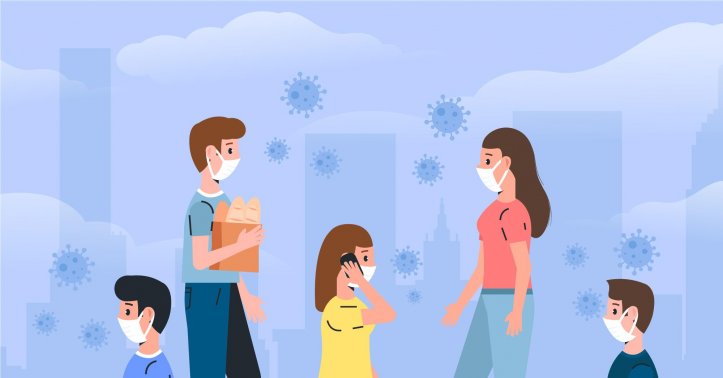
Staying safe in crowds
Since safety in crowds involves both physical and digital risks, I'll include tips on securing belongings and avoiding pickpockets. The tone should be calm and authoritative but not alarmist, emphasizing preparedness without fear-mongering.
I'll start with a quick reassurance to set the tone, then break it into logical sections. Pre-crowd planning is foundational, so that comes first. In-crowd strategies should highlight body positioning and situational awareness. Ending with post-crowd steps wraps it up neatly. Avoiding markdown keeps it accessible, and bullet points (with asterisks) will make it scannable.
Of course. Staying safe in crowds is a valuable skill for concerts, festivals, public transport, protests, or even just busy shopping streets. It boils down to preparation, situational awareness, and knowing how to react.
Here is a comprehensive guide to remaining safe in crowds, broken down into three phases: Before, During, and After.
Phase 1: Before You Go – Preparation is Key
1. Plan and Research:
-
Know the Venue: Look at a map. Identify main entrances, exits, emergency exits, medical tents, and safe meeting points.
-
Check the Weather: Dress appropriately. Extreme heat or cold in a dense crowd can be dangerous.
-
Understand the Event: A religious gathering will have a different vibe than a sports match or a protest. Gauge the likely crowd temperament.
2. Dress Smartly:
-
Wear Comfortable, Closed-Toe Shoes: This is non-negotiable. You need sturdy footwear to protect your feet and to be able to move quickly and comfortably.
-
Avoid Loose Clothing & Scarves: These can get caught on people or objects, posing a trip or entanglement hazard.
-
Consider the "Phone, Keys, Wallet" Rule: Carry only the essentials. Use a zipped or buttoned pocket, preferably on the front of your body.
3. Communicate Your Plans:
-
Tell a friend or family member where you are going, who you are with, and when you expect to be back.
-
Establish a meeting point inside the venue in case you get separated from your group and cell service is down.
4. Charge Your Phone:
-
Ensure your phone is fully charged. Consider bringing a small portable power bank.
5. Pack a "Go-Bag" (for large events/festivals):
-
A small bottle of water.
-
Some cash (in case card machines fail).
-
A small first-aid kit (band-aids, antiseptic wipes).
-
Any essential medication (e.g., an inhaler).
-
A portable phone charger.
Phase 2: While You're in the Crowd – Situational Awareness
This is the most critical phase.
1. Stay Aware of Your Surroundings (Get your head out of your phone):
-
Scan the environment periodically. Notice the flow of people, the location of exits, and any potential hazards.
-
Avoid wearing headphones with loud music that blocks out ambient sound. You need to hear what's happening around you.
2. Position Yourself Wisely:
-
Since safety in crowds involves both physical and digital risks, I'll include tips on securing belongings and avoiding pickpockets. The tone should be calm and authoritative but not alarmist, emphasizing preparedness without fear-mongering.
I'll start with a quick reassurance to set the tone, then break it into logical sections. Pre-crowd planning is foundational, so that comes first. In-crowd strategies should highlight body positioning and situational awareness. Ending with post-crowd steps wraps it up neatly. Avoiding markdown keeps it accessible, and bullet points (with asterisks) will make it scannable.
Of course. Staying safe in crowds is a valuable skill for concerts, festivals, public transport, protests, or even just busy shopping streets. It boils down to preparation, situational awareness, and knowing how to react.
Here is a comprehensive guide to remaining safe in crowds, broken down into three phases: Before, During, and After.
Phase 1: Before You Go – Preparation is Key
1. Plan and Research:
-
Know the Venue: Look at a map. Identify main entrances, exits, emergency exits, medical tents, and safe meeting points.
-
Check the Weather: Dress appropriately. Extreme heat or cold in a dense crowd can be dangerous.
-
Understand the Event: A religious gathering will have a different vibe than a sports match or a protest. Gauge the likely crowd temperament.
After the Event
Leave Calmly: The end of an event is often when crowds are most unpredictable. Wait a few minutes if you can, or move slowly and patiently with the flow.
Head to Your Pre-Arranged Meeting Point.
Stay Alert: Even after leaving the main crowd, be aware of your surroundings as you navigate parking lots or public transport.
4. If You See Someone in Trouble:
Call for Help: Yell for security or emergency services.
Form a Chain: If possible, link arms with others to form a human chain to pull the person to safety. Do not let go if you start pulling.
Create Space: If someone has fallen, try to form a circle around them with others to create a protective barrier.
3. If You Are Trapped in a Crush:
Conserve Energy and Oxygen. Do not scream unnecessarily. Shouting uses precious oxygen and may not be heard over the noise. Yell in short, loud bursts if you need help.
Focus on Breathing. The pressure can make it hard to expand your diaphragm. Take slow, deliberate breaths.
2. If You Fall:
GET UP IMMEDIATELY. This is a top priority. Do not stay down to retrieve lost items.
If you can't get up, curl into the fetal position. Protect your head with your arms, and cover your neck with your hands. Try to get onto your knees, using them as a shield, and then attempt to get up in a lunge position when there's a slight lull in the pressure.
Do NOT fight the flow. Go with the movement of the crowd. Trying to go directly against it is futile and dangerous.
Move Diagonally with the flow, "swimming" your way towards the edge or an exit.
Keep Your Hands Up by your chest, like a boxer. This protects your ribcage and gives you crucial breathing space. Do not put your hands at your sides.
Phase 3: If Things Go Wrong – Handling Crowd Crushes and Surges
This is the emergency protocol. The goal is to stay on your feet and get to the edge.
1. If You Feel Pressure Building:
5. Trust Your Gut:
If a situation or a specific person feels wrong, it probably is. Don't second-guess yourself. Move away calmly and confidently.
4. Identify Escape Routes:
Always know the quickest way to an exit or a less dense area. Mentally note these as you move.
3. Protect Your Personal Space and Belongings:
Anti-Theft Tips: Keep your bag or backpack in front of you. Use a cross-body bag. Keep your wallet/phone in a front pocket, not a back one.
Create a "Bubble": Hold your arms slightly away from your body, elbows out, to create a small pocket of space around your chest. This helps you breathe and gives you room to move if needed.
2. Position Yourself Wisely:
The Edges are Safest: The densest and most dangerous areas are usually the center and the front (e.g., near a stage). Position yourself towards the sides or the back where the crowd is thinner and it's easier to move.
Stay Upright and Keep Your Feet: If you feel a surge, plant your feet firmly and keep your balance. Do not sit down in a dense crowd.
Phase 2: While You're in the Crowd – Situational Awareness
This is the most critical phase.
1. Stay Aware of Your Surroundings (Get your head out of your phone):
Scan the environment periodically. Notice the flow of people, the location of exits, and any potential hazards.
Avoid wearing headphones with loud music that blocks out ambient sound. You need to hear what's happening around you.
5. Pack a "Go-Bag" (for large events/festivals):
A small bottle of water.
Some cash (in case card machines fail).
A small first-aid kit (band-aids, antiseptic wipes).
Any essential medication (e.g., an inhaler).
A portable phone charger.
4. Charge Your Phone:
Ensure your phone is fully charged. Consider bringing a small portable power bank.
3. Communicate Your Plans:
Tell a friend or family member where you are going, who you are with, and when you expect to be back.
Establish a meeting point inside the venue in case you get separated from your group and cell service is down.
2. Dress Smartly:
Wear Comfortable, Closed-Toe Shoes: This is non-negotiable. You need sturdy footwear to protect your feet and to be able to move quickly and comfortably.
Avoid Loose Clothing & Scarves: These can get caught on people or objects, posing a trip or entanglement hazard.
Consider the "Phone, Keys, Wallet" Rule: Carry only the essentials. Use a zipped or buttoned pocket, preferably on the front of your body.
By Jamuna Rangachari








